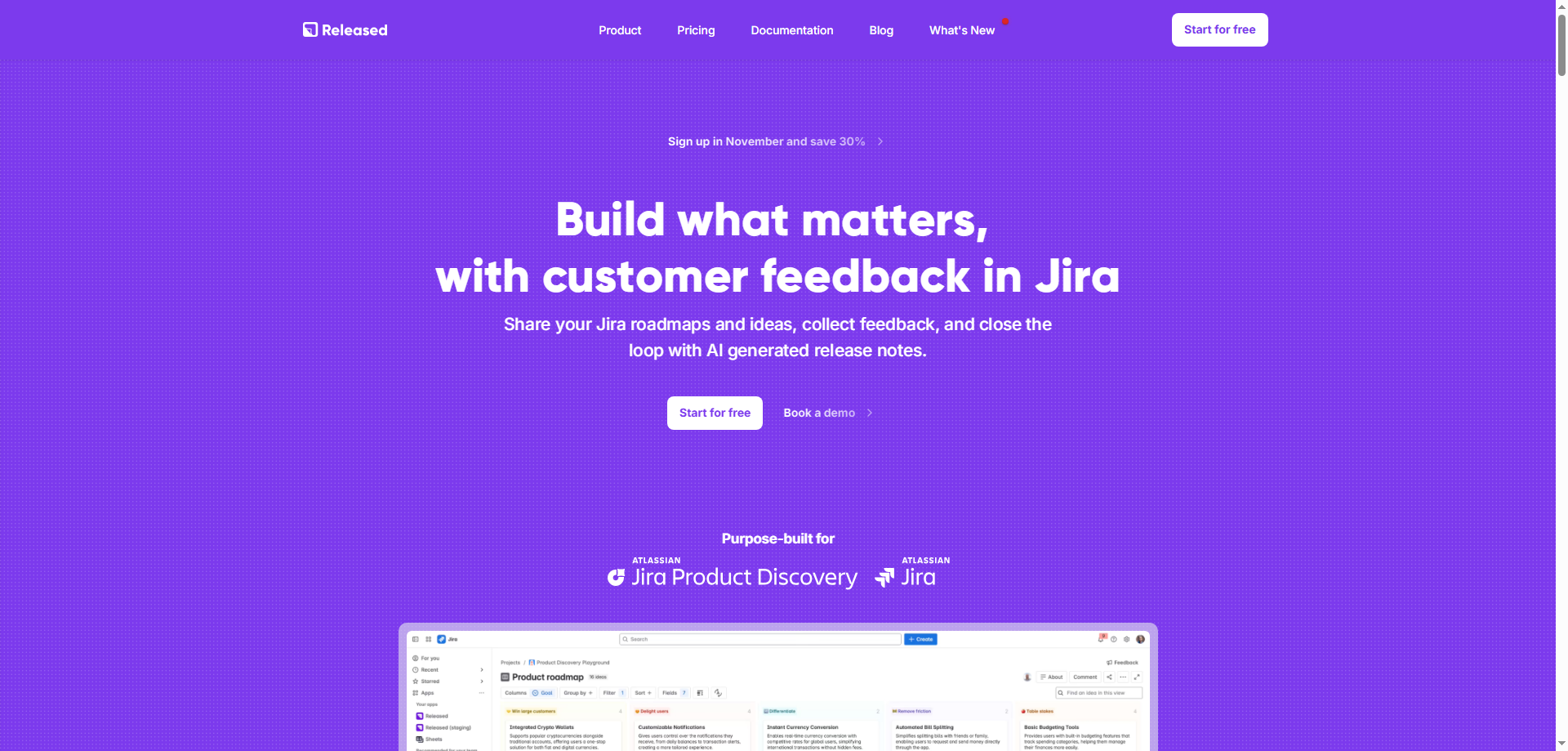1. From a Creative Perspective: Turning Jira into a Living Dialogue
I’ve always believed that the best products come from listening — not assuming. That’s why Customer Feedback Portal for Jira feels like such a breath of fresh air. It turns Jira, a tool I’ve always used for internal project management, into something far more human — a conversation between me, my team, and our users.
Imagine being able to post your roadmap updates or feature ideas directly inside Jira — and have your customers, stakeholders, or partners respond right there. Their thoughts, opinions, and suggestions don’t get lost in emails or Slack threads. Instead, they flow right back into your Jira workspace, automatically linking feedback with real development tasks.
For me, it’s like watching creativity and practicality finally sync up. I can test ideas faster, prioritize better, and — most importantly — build what my customers actually care about.
The creative magic lies in how it dissolves the barrier between “builder” and “user.” Every new idea feels like a collaboration, not a guess. Jira has always been my team’s brain — now it’s got a voice, too.
2. From a Disruptive Perspective: Could It Replace Other Feedback Tools?
Let’s talk disruption — because this product is quietly shaking things up.
Before discovering Customer Feedback Portal for Jira, I used multiple tools for feedback collection: Typeform for surveys, Trello for tracking requests, and endless spreadsheets to organize them. It was messy and disconnected. Now? Everything happens inside Jira. No more copying feedback across tools or losing track of which customer requested what.
Can it replace existing feedback tools like Canny, Productboard, or UserVoice? For many teams — yes. Especially for those already deep in the Jira ecosystem. It’s seamless, native, and efficient. The fact that feedback syncs directly with issues, stories, and epics means no information gap, no data silos, and no context switching.
That’s the real disruption here — it doesn’t reinvent the workflow; it completes it.
For me, it’s like giving Jira superpowers — the kind that connect strategy to empathy, and data to human insight. While others chase “integration,” this tool is integration.
3. From a Demand Perspective: Why Users Are Loving It (and I Totally Get Why)
If you’ve ever worked in product development, you know how crucial — and frustrating — user feedback can be. Everyone says they want it, but no one has time to manage it properly. That’s exactly the pain Customer Feedback Portal for Jira solves.
Its user adoption makes total sense. With over 200 upvotes and growing attention on Product Hunt, it’s clear teams are hungry for this kind of simplicity. Product managers love how it centralizes communication, developers love how it automatically turns feedback into actionable Jira tasks, and customers love feeling heard.
When I started using it, I noticed something almost immediately — our feedback loop shortened dramatically. Customers would comment on our new features, and within a day or two, we’d already have follow-up changes in Jira. No friction, no miscommunication.
And honestly? People noticed. Customers started saying things like, “Wow, it feels like you’re actually listening.” That’s priceless in today’s product world.
So from a demand standpoint, the product nails a deep, universal need: connecting feedback to action. It’s not just another productivity tool — it’s a relationship builder.
4. One-Year Survival Forecast: ⭐️⭐️⭐️⭐️☆ (4.5 out of 5 Stars)
Here’s my honest take — Customer Feedback Portal for Jira has a bright future ahead. I’d give it 4.5 out of 5 stars for long-term survival potential.
Opportunities:
- Native integration advantage: It’s perfectly positioned to dominate the Jira ecosystem since it solves a pain point Atlassian hasn’t fully addressed.
- Growing feedback-first culture: More companies are adopting “continuous discovery” models — this tool fits perfectly into that mindset.
- Scalability: It’s suitable for startups and large enterprises alike. Feedback collection and syncing scale naturally with Jira usage.
Risks:
- Niche dependency: It’s deeply tied to Jira. That’s both a strength and a limitation — if a company doesn’t use Jira, the tool’s value drops.
- Feature competition: Other feedback tools could develop similar Jira integrations, so constant innovation will be key.
- Adoption curve: Some teams might hesitate to open their Jira environment to external users without clear permissions and privacy controls.
That said, the opportunities clearly outweigh the risks. The product hits the sweet spot between usability and value — it’s simple enough for any team to adopt, but powerful enough to truly change workflows.
I can see Customer Feedback Portal for Jira becoming the go-to solution for feedback-driven development inside Atlassian’s world.
Final Thoughts
For me, Customer Feedback Portal for Jira feels like what every product manager secretly wanted but didn’t know existed — a tool that bridges the communication gap between creators and users without adding friction.
It’s creative, it’s disruptive, and most importantly, it’s human. It takes something as technical as Jira and makes it emotional again — because behind every ticket is a customer story waiting to be heard.
When I use it, I feel like my team’s workflow finally makes sense. We’re not just managing tasks anymore — we’re co-creating solutions.
If your product roadmap feels like a one-way street, this is the on-ramp to two-way collaboration.









